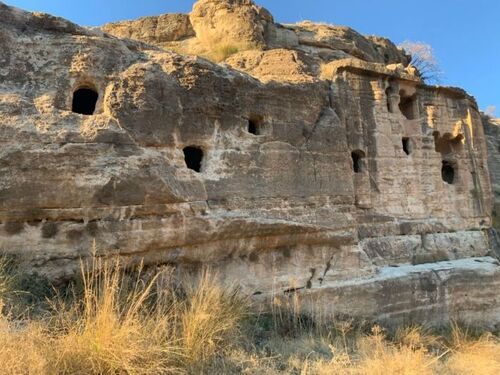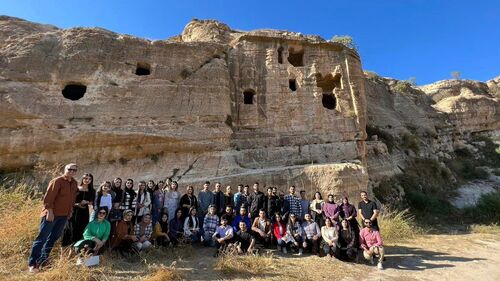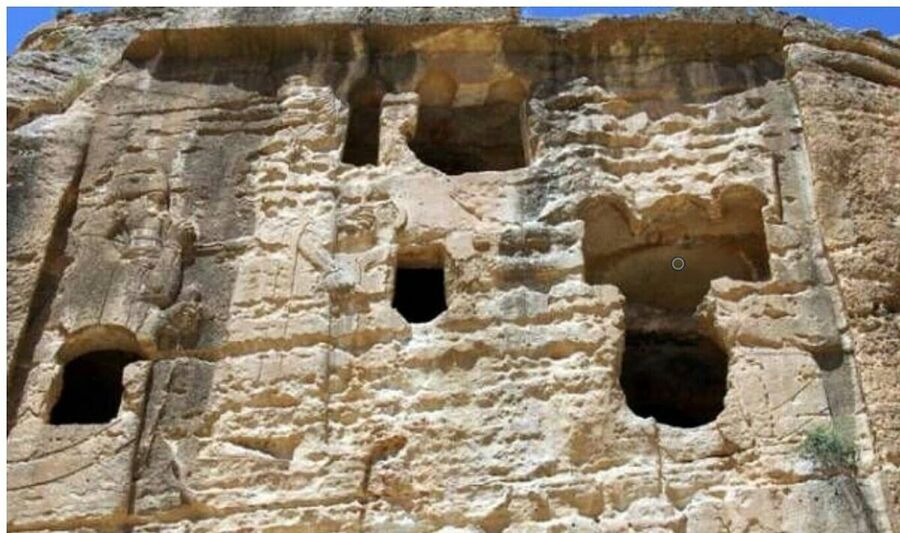Khins is one of the ancient monuments of the Southern part of Kurdistan, located in Duhok province. This monument is located near Sheikhan district and 13 kilometers away from the district. Khins is considered one of the most important monuments not only in the Kurdistan Region but also in Iraq.
The monument dates back to the Assyrian rule and King Sennacherib (681-705 BCE). Historical evidence suggests that Khins was the residence of King Sennacherib in Summer, who ruled the region for twenty-four years.

Part of the monument is a large stone painting carved into the heart of a mountain showing four people. Four caves have been built in this place, which is located in the archaeological carving. A lion statue was built on top of the caves, but unfortunately, some of them have been destroyed. The images are geometrically and artistically carved and are of some height.
Because Kurdistan's geography was rich in water resources compared to other parts of Iraq, Sennacherib used this place as a source of water for the Assyrian capital of Nineveh.

This historical monument was first discovered and recorded by an Italian team and its 2,700-year history has been revealed.
Two styles of writing are used on the walls of Khins; hieroglyphic and cuneiform writing. In the hieroglyphic inscription, it mentions the relationship of the Mitanni state with Egypt, which had important relations at that time. Unfortunately, this hieroglyphic writing has disappeared due to weather and natural causes.

The cuneiform inscription consists of 64 lines divided into three paragraphs. These stone inscriptions were written by the King Sennacherib.
The first deals with the important gods of the Assyrian state and their importance in protecting the Assyrian state.
The second paragraph describes the importance of the Khins water project, from which Assyrian King Sennacherib took water to the Assyrian capital.
The third part describes the attack of the Assyrian state led by Sennacherib's son Esarhaddon on the Babylonians.
Each of these inscriptions and maps refers to a historical event that occurred during this period.

What does the name Khins come from?
This name is first attributed to the Assyrian king in cuneiform inscriptions. It is believed that the name Khins is derived from the name of the Egyptian god Khins, who was the god of the city of Tiba. At that time, the name of Khins was Kharasu or Khanasu and the name appeared in the Qur'an too.
The monument is known to date back to the Assyrian period, but the hieroglyphic inscription proves that it was actually built in whole or in part during the reign of Mitanni, a Kurdish state.
Archaeologists have pointed out that with the passage of time and the change of religions in the area such as Zoroastrianism, Christianity, and several other religions, this area was regarded as a sacred religious place.

Much of this important historical monument has collapsed and broken. Some of it has been destroyed due to natural causes and others due to human causes and the destruction of monuments in the area. In addition, Khins has always been an important touristic and civilizational area that has had special importance during different periods of the rulers of this region. That is, it is not only regarded as a historical site but has become an important tourist destination in Duhok province, and hundreds of domestic, central, and southern Iraqi tourists, even foreign tourists, come to visit this monument in Duhok province every year.









